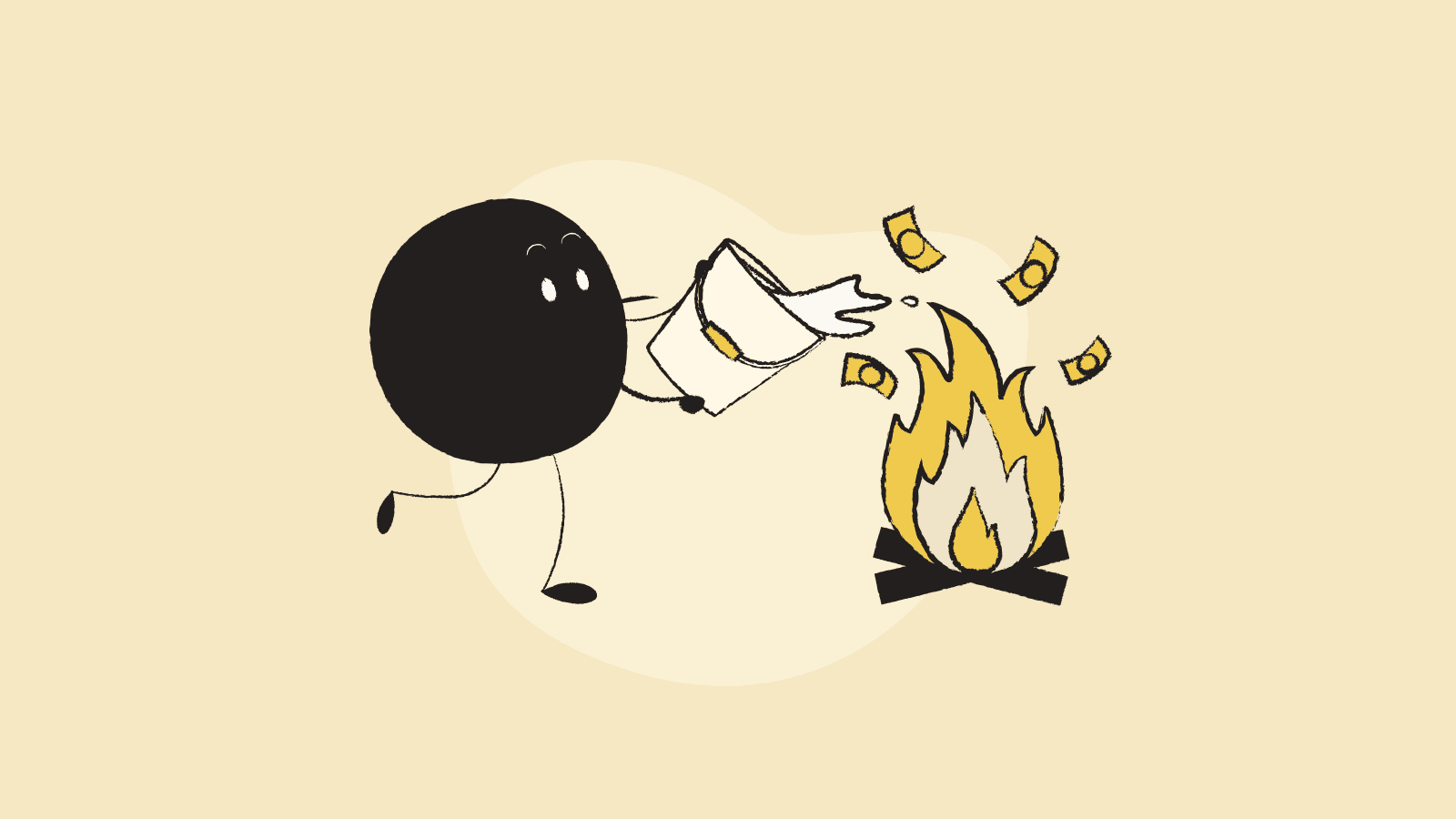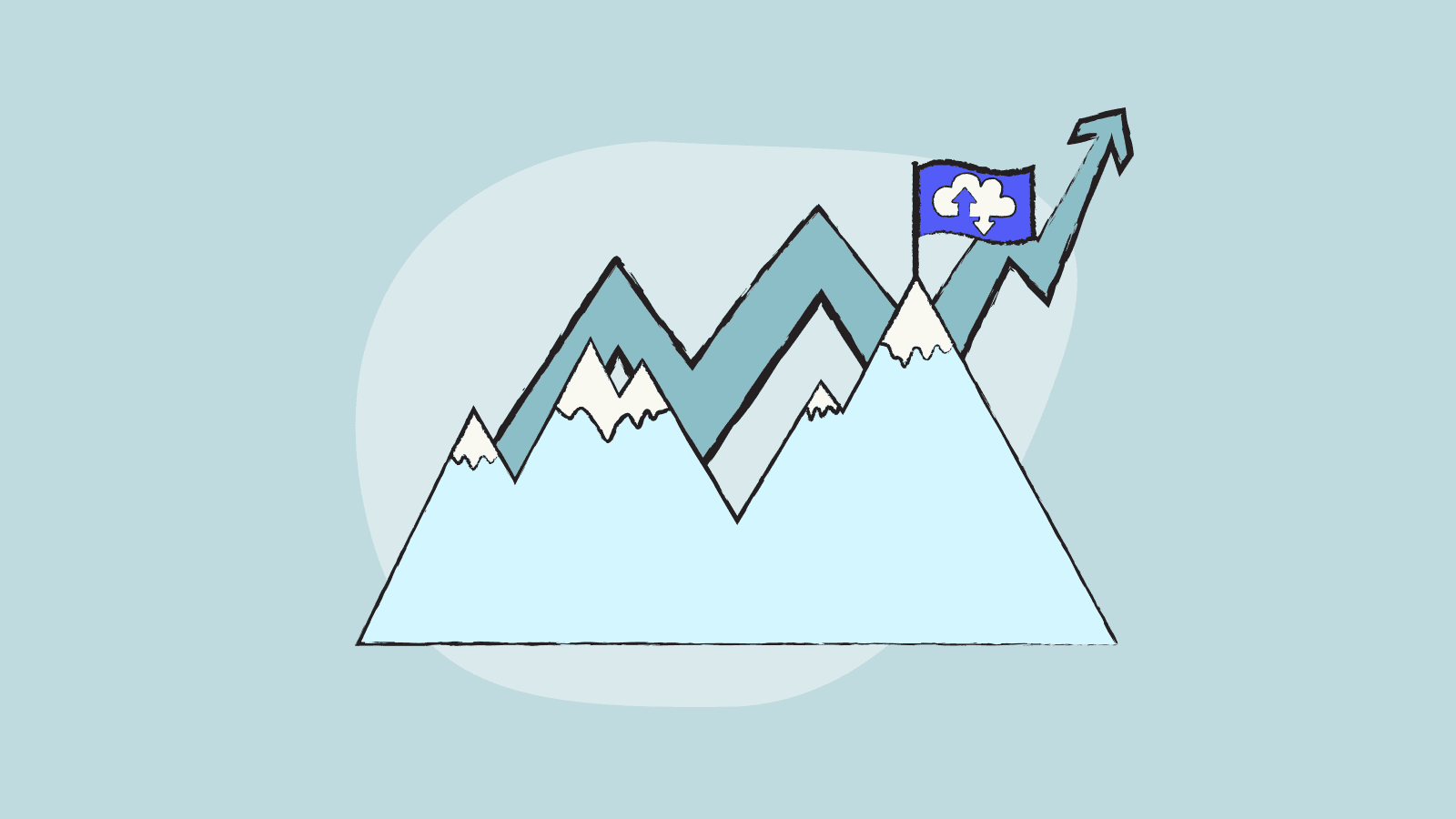You're here:
What is burn rate in SaaS and how to reduce It

In the fast-paced world of SaaS startups, staying on top of your finances can mean the difference between scaling successfully and running out of runway. One of the most critical metrics to monitor is burn rate—the rate at which your company is using up its cash reserves to cover operating expenses.
If you are interested in the startup scene, you’ve likely heard, “We are burning $30K per month,” or “we need to reduce our burn rate.” For SaaS businesses, where upfront costs are high and revenue can take time to catch up, understanding and managing burn rate is essential to long-term sustainability.
In this blog, we’ll break down what burn rate really means, why it matters in the SaaS landscape, and—most importantly—how to reduce it without stalling growth. Whether you're a founder, CFO, or curious operator, you’ll gain actionable insights, useful metrics, and proven strategies to extend your runway and strengthen your financial position.
Let’s break this down.
What Is a Burn Rate?
The “burn rate,” or “burn” for short, is the rate at which a company spends its cash reserves to cover overhead expenses..
Here is the Burn Rate Formula:
Burn Rate = (Starting Cash – Ending Cash) / Number of Months
For example: If your SaaS startup starts the month with $100,000 in the bank and ends with $60,000, your burn rate is:
Burn Rate = ($100,000 – $60,000) / 1 month = $40,000 per month
That means you’re burning $40,000 every month — or $480,000 annually if the rate stays consistent.
The origins of the term “burn rate” are unclear, but the most likely contender is rocket science. Money is fuel for companies: It propels your startup forward on its path toward growth and profitability. If you use your fuel inefficiently or burn it too fast, you might not reach your goal or destination.
So how do you use your cash fuel wisely? In order to figure this out, we need to get a better understanding of how the burn rate is calculated.
Burn Rate Metrics
There are two types of burn rate?? Yes, and each plays a key role in understanding your company’s financial health.
Gross Burn Rate
The gross burn rate is the total of a company’s expenses during a given period of time such as a month or a year. Everything you spend adds to your gross burn rate.
Formula: Gross Burn Rate = Total Monthly Operating Expenses
Example:
If your company spends $100,000 per month on salaries, tools, and infrastructure, your gross burn rate is $100,000—even if you're generating revenue.
Net Burn Rate
Net burn rate takes revenue into account and occurs when a company spends more than it earns and shows how much cash your company actually loses each month, i.e. its negative income. It’s a more accurate measure of financial sustainability than gross burn rate.
Formula:
Net Burn Rate = Monthly Operating Expenses – Monthly Revenue or
Net Burn Rate = Starting Cash – Ending Cash / Number of Months
Example:
If you're spending $100,000/month and generating $60,000 in revenue, your net burn rate is:
$100,000 – $60,000 = $40,000/month
This means you’re losing $40,000 per month after accounting for income.
This means that only companies that are losing money have a net burn rate, profitable businesses have, well, profits, i.e. positive income.
Typically, when people talk about “burn rates”, they refer to a company’s net burn rate.
Burn Multiple
Burn Multiple is a performance metric that shows how efficiently a SaaS company turns cash burn into revenue growth. It's especially useful for investors.
Formula: Burn Multiple = Net Burn / Net New ARR (Annual Recurring Revenue)
Example:
If you burned $400,000 in a quarter and added $200,000 in new ARR, your burn multiple is:
$400,000 / $200,000 = 2.0
A lower burn multiple (ideally under 1.5) indicates efficient growth; a higher one suggests you're spending too much to grow too little.
Cash Runway
Cash Runway tells you how many months your company can continue operating at its current burn rate before running out of money. It’s a critical metric for strategic planning and investor conversations.
Formula: Cash Runway = Current Cash Balance / Net Burn Rate
Example:
If you have $240,000 in the bank and a net burn rate of $40,000/month:
Cash Runway = $240,000 / $40,000 = 6 months
This means you have six months to either reduce your burn, raise more capital, or increase revenue before funds are depleted.
The date when you will finally run out of money, is called the zero cash date.
Why Is It Important to Measure Burn Rate?
Understanding and regularly measuring your burn rate is critical for any SaaS company—especially in the early stages when profitability is still on the horizon. Here's why it's so important:
1. Assess Financial Health
Burn rate gives you a real-time snapshot of how fast your business is using cash. A consistently high burn rate without matching growth or revenue signals potential trouble. Tracking it helps identify whether your spending aligns with your business goals or if adjustments are needed to stay solvent.
2. Plan Cash Flow and Runway
By knowing your net burn rate, you can calculate your cash runway—how many months you have before running out of money. This allows you to make informed decisions on hiring, scaling, and investing in growth initiatives. It also helps you time your fundraising efforts before cash gets critically low.
3. Attract Investor Confidence
Investors don’t just look at revenue—they closely examine how efficiently you're using capital. A responsible burn rate combined with strong growth shows that your company knows how to manage resources. Metrics like burn multiple are especially useful in demonstrating your capital efficiency and boosting investor trust.
In short, measuring burn rate isn’t just about cutting costs—it’s about controlling your trajectory and making smarter, data-backed decisions to ensure long-term success.
How to Reduce Your Burn Rate
1) Maximize Free Tools & Free Trials
Before committing to expensive software or platforms, explore free alternatives and take full advantage of extended free trials. Many tools offer enough features to cover early-stage needs—whether it's for marketing, CRM, analytics, or project management. This helps reduce monthly operating costs while maintaining productivity.
2) Hire Only When Necessary
Hiring too quickly can inflate your burn rate without immediately increasing output. Focus on building a lean, high-performing team by filling only mission-critical roles. Consider freelancers or contractors for short-term needs to avoid long-term salary commitments until your revenue justifies scaling.
3) Find Alternative Sources of Revenue
Diversify your income streams to ease dependence on one core product. Introduce upsell and cross-sell opportunities, such as premium features, onboarding packages, or integrations. You can also explore complementary products or services that add value to your current customer base and drive incremental revenue.
4) Delay Your Payments as Much as Possible
Negotiate extended payment terms with vendors and suppliers. By delaying outflows—even by 30 or 60 days—you can preserve more cash in the short term and improve your monthly burn rate. Just ensure these delays don't damage relationships or incur penalties.
5) Optimize Your SaaS Pricing Strategy
Your pricing should reflect the value your product delivers. Revisit your pricing model to identify opportunities to increase average revenue per user (ARPU) without hurting conversions. Consider tiered pricing, value-based pricing, or bundling features strategically to maximize revenue from existing customers.
6) Raise Capital from Investors
When your financials are solid and your growth story is strong, raising capital can extend your runway and support expansion. The key is to raise the right amount at the right time—enough to reach your next milestone without excessive dilution. Prepare thoroughly to attract the right investors who align with your long-term vision.
Note: Investor Money Isn’t Free. Use It Wisely!
It might not feel like it, but spending investor money comes at a real cost. Just because you're not pulling funds from your own pocket doesn't mean it's "free." Here’s why:
First, most venture capital is distributed in funding rounds over time. If you don’t demonstrate smart, efficient use of capital in early stages, you likely won’t secure future rounds. Burn through cash too fast without results, and investors will lose confidence.
Second, every dollar you raise means giving up equity—ownership in your company. The more equity you give away now, the less you'll own later. That directly affects your future earnings if the company becomes successful. More ownership = a bigger payday.
The takeaway? Use investor capital strategically. The goal is to minimize dependence on external funding by shortening the path to profitability. That way, you protect your runway and your long-term upside.
How to Extend Your Runway
So how can you make your runway longer? In other words: How can you buy your SaaS company more time to become profitable and get rid of its burn rate?
You need to increase your cash balance, i.e. you need to find money!
You can do this by increasing your revenue, of course. When this is not possible or sufficient, the most common option for startups, including SaaS businesses, is to sell equity for funding from investors such as business angels or VCs. This means that you give up part of the ownership in your company in exchange for an extension on your runway, i.e. more time to get your business to a point where it produces a positive income. By giving you funding, your investors are “betting” on your ability to yield future profits.
Why burn at all?
If burning investors’ money is expensive, why would you even want to deal with a burn rate in the first place? There are two main reasons:
1. Because sometimes it is the only option
Most SaaS startups are not immediately profitable; they require some time to get to a position where their revenue is higher than their expenses. This means that they need a sufficiently large cash balance to cover enough of a runway for them to reach positive income.
2. To accelerate growth
Sometimes high growth is a more important goal than profitability. This is especially true for the SaaS space. Growing revenue rapidly can help position your company as the market leader, yield greater profits, and lead to higher valuations.
Ready to get a clearer picture of your SaaS company’s financial health? Start using accrual accounting to track revenue and expenses more accurately.
Final Thoughts About Burn Rate In SaaS
At first glance, burning money may not seem like a great idea for any business, SaaS or otherwise. However, if managed well, it may be a very viable way for you to build a profitable company and ensure a paycheck for yourself and your team in the future.
Take the time to do the math properly and to get a thorough understanding of what a feasible burn rate might be for your startup. It may take a little while, but you can definitely wrap your head around it…it’s not rocket science, after all. 🙂
Note: At Quaderno we love providing helpful information and best practices about taxes, but we are not certified tax advisors. For further help, or if you are ever in doubt, please consult a professional tax advisor or the tax authorities.


